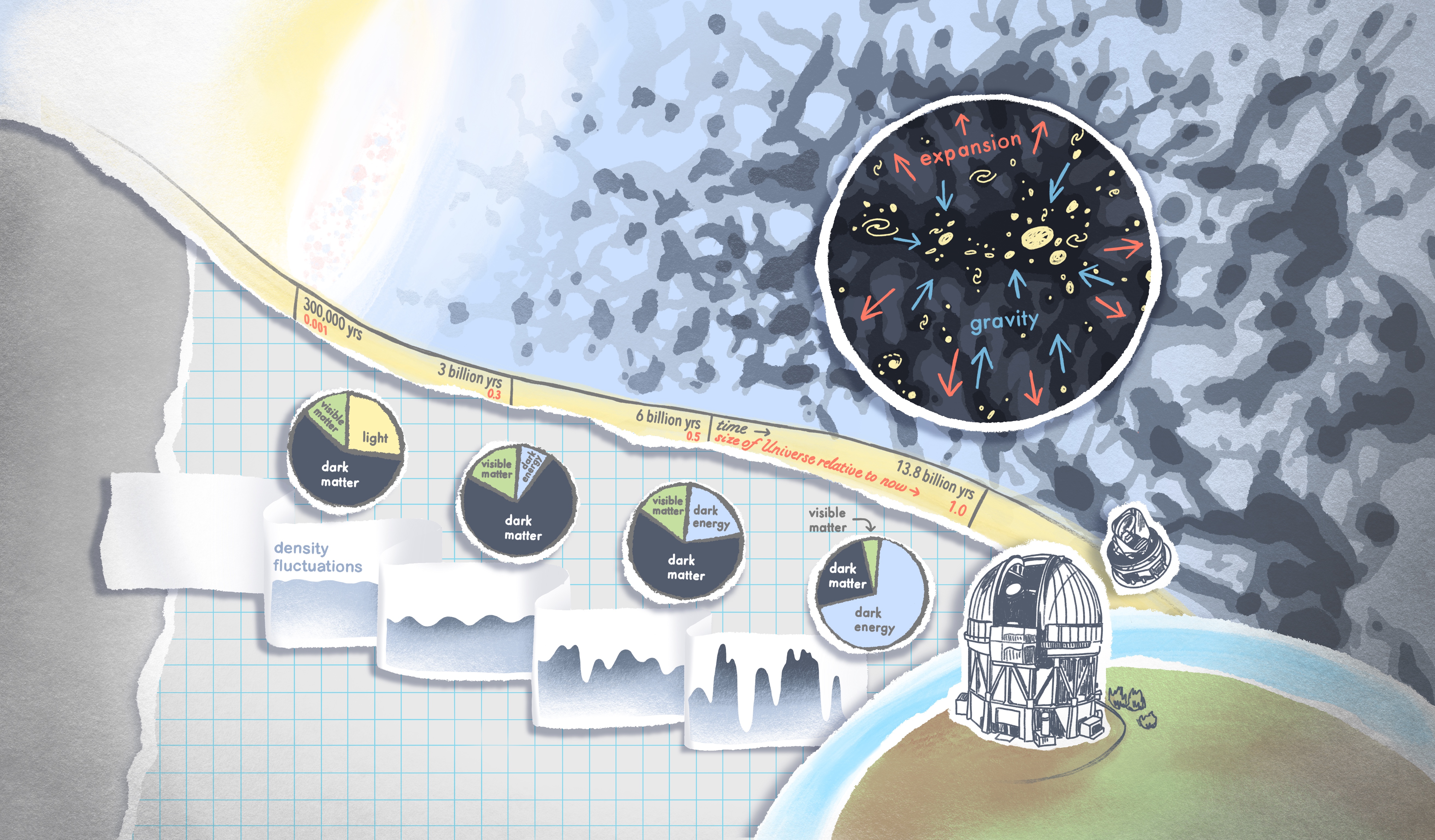
Is all dark matter cold?
Is dark energy merely the vacuum energy and a constant in Einstein equation of general relativity?
Does GR still describe gravity on cosmological scales?
How did tiny initial fluctuations in the early Universe look like?
How did galaxies, galaxy clusters and cosmic filaments form and evolve from those primordial seeds?
I am a cosmological modeler working at the interface of theory and observations, looking for hints to (hopefully!) answer the above questions.
My research combine perturbative approaches, i.e. perturbation theory (PT) and the effective field theory of large-scale structure (EFTofLSS), with novel statistics to build accurate and roburst forward models that yield optimal Bayesian inference and comparison of cosmological parameters and models.
The full list of my publications can be found on arXiv, NASA ADS and iNSPIRE HEP. Below are highlights from key projects where I have a) led the effort or b) contributed as a key author.
Research highlights
Field-level Bayesian Inference of Large-scale Structure
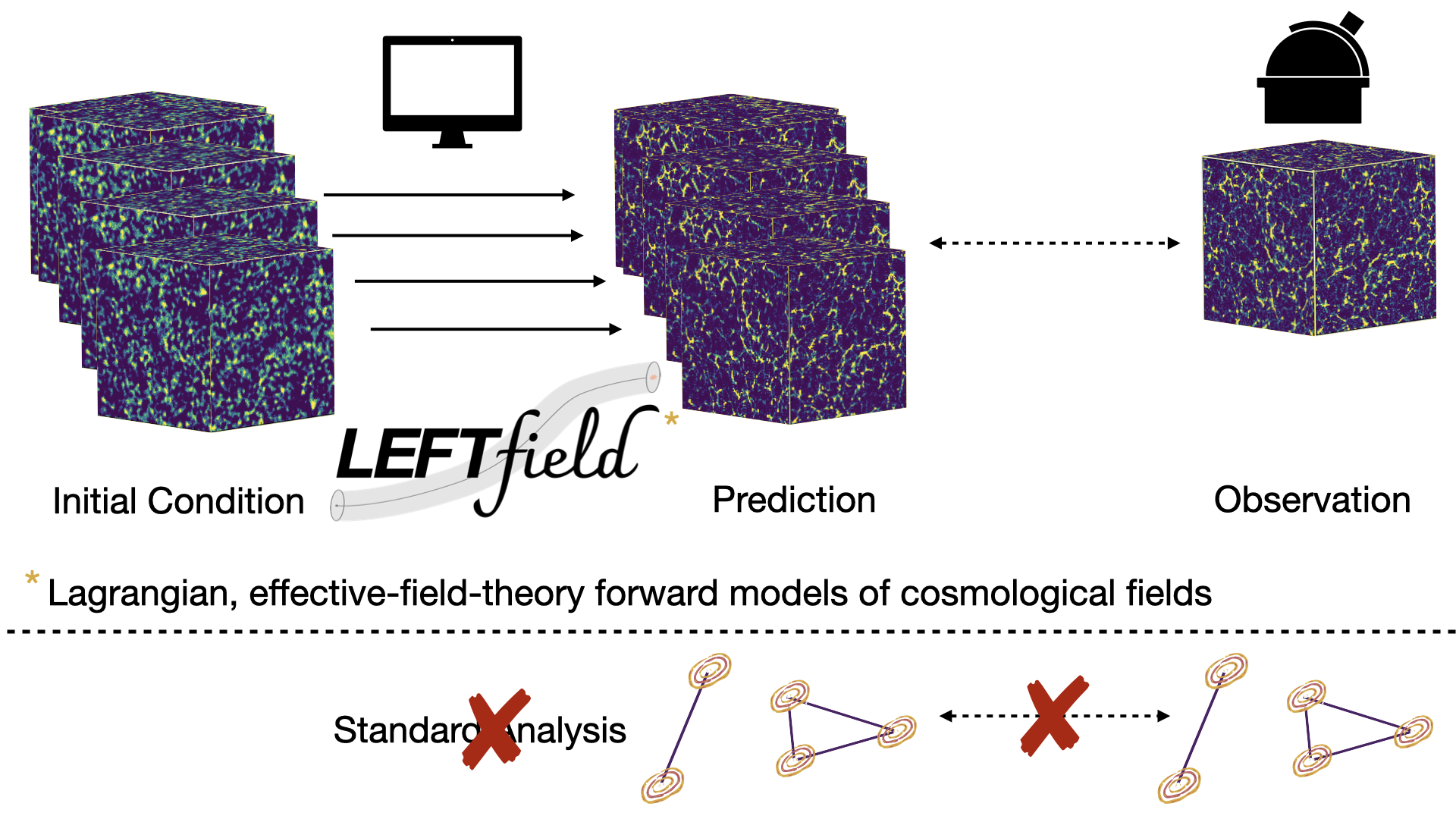
In a work published on JCAP and featured on MPA research highlight, we built a novel forward-modeling pipeline for field-level inference (FLI), based on the EFTofLSS and Bayesian frameworks. FLI aims to infer the initial conditions of the Universe, i.e. the primordial density field, from the observed LSS field, i.e. the galaxy density field, while simultaneously inferring the parameters of the cosmological models. FLI guarantees optimal inference without information loss.
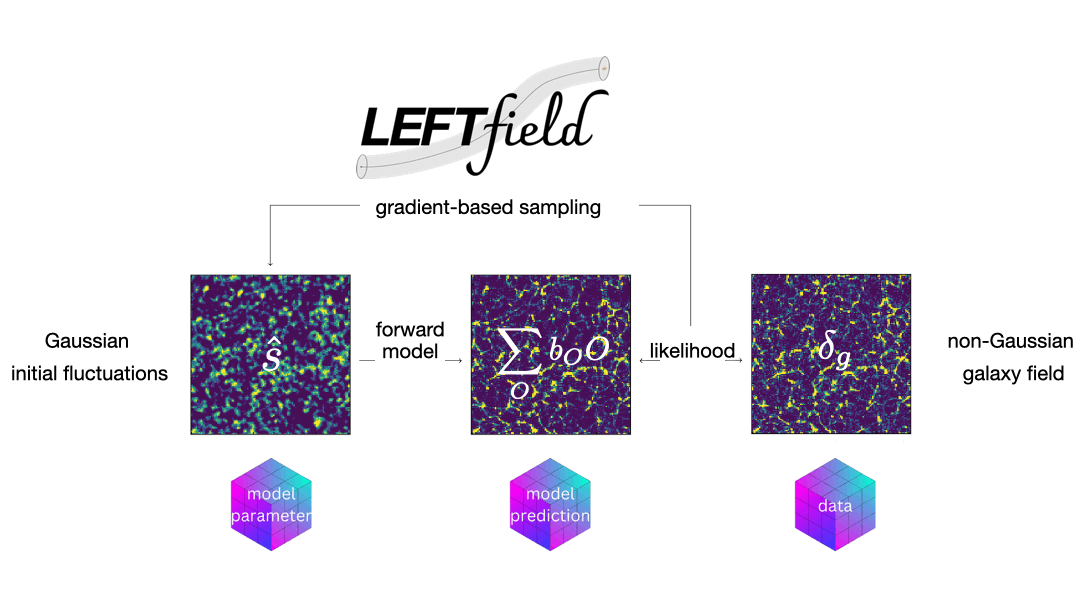
In a follow-up published on Physical Review Letters, we further demonstrated that FLI can robustly recover not only the correct initial conditions of the test simulations, but also unbiased cosmological parameters—with a factor of x5 improvement over standard analysis involving low-order n-point summary statistics, namely the power spectrum (2-point correlation function) and bispectrum (3-point function). Preprint of the PRL article can be found on arXiv.
Here is my interview with Shaun Hotchkiss on Cosmology Talks about this result, featuring Beatriz Tucci (PhD candidate, MPA and IMPRS), the stellar half of this work and interview.
Growth of Structure Suppression in the Late Universe
Analyzing current CMB and LSS data, we detect evidence for a suppressed growth rate of large scale structure in the late Universe.
Here is my interview with Shaun Hotchkiss on Cosmology Talks about this result:
Thi work is published on PRL as an Editor’s Suggestion. For open access, please see the arXiv preprint.
New Scientist’s coverage of our results can be found here. The original press release by University of Michigan News is here. If you prefer to read about it in my own words, here is my Science x Dialog on Phys.org.
Related Topics
Measuring the kinematic Sunyaev-Zel’dovich while optimally account for cluster velocity uncertainty
As CMB photons traverse the Universe towards us and our telescopes, they encounter and scatter off free electrons inside cluster of galaxies along the line-of-sight (LOS). These scatterings leave tiny secondary anisotropiess on the CMB map. The cartoon below illustrates such imprints, specifically the kinematic Sunyaev-Zel’dovich effect (kSZ): the CMB photons appear to be Doppler-shifted towards either blue or red – that is, hot or cold relatively to the primary CMB blackbody temperature – depending on whether the cluster is moving away or towards the observer. At first order, for each individual galaxy cluster, the shift is linearly proportional to the product of cluster’s LOS velocity and free electron abundance.

I have developed a Bayesian framework to optimally extract the kSZ signal from cross-correlation between CMB and cluster velocity datasets. The framework, for the first time, consistenly accounts for uncertainty in large-scale velocity reconstruction. On two modest samples of maxBCG galaxy clusters with spectrocospic or photometric reshifts, I find evidence of the kSZ signal at more than 2-sigma level. The amount of free electrons hosted by these clusters is in agreement with the cosmic abundance. My findings are summarized in the figure on the right which shows the kSZ signal amplitude -- or, equivalently, the fraction of (free-)electrons-to-dark-matter -- as a function of cluster relative apparent size.
I further demonstrate that, without accounting for velocity uncertainty, one can bias their kSZ measurement by up to a factor of 2 (see e.g. figure 4 in the paper below).
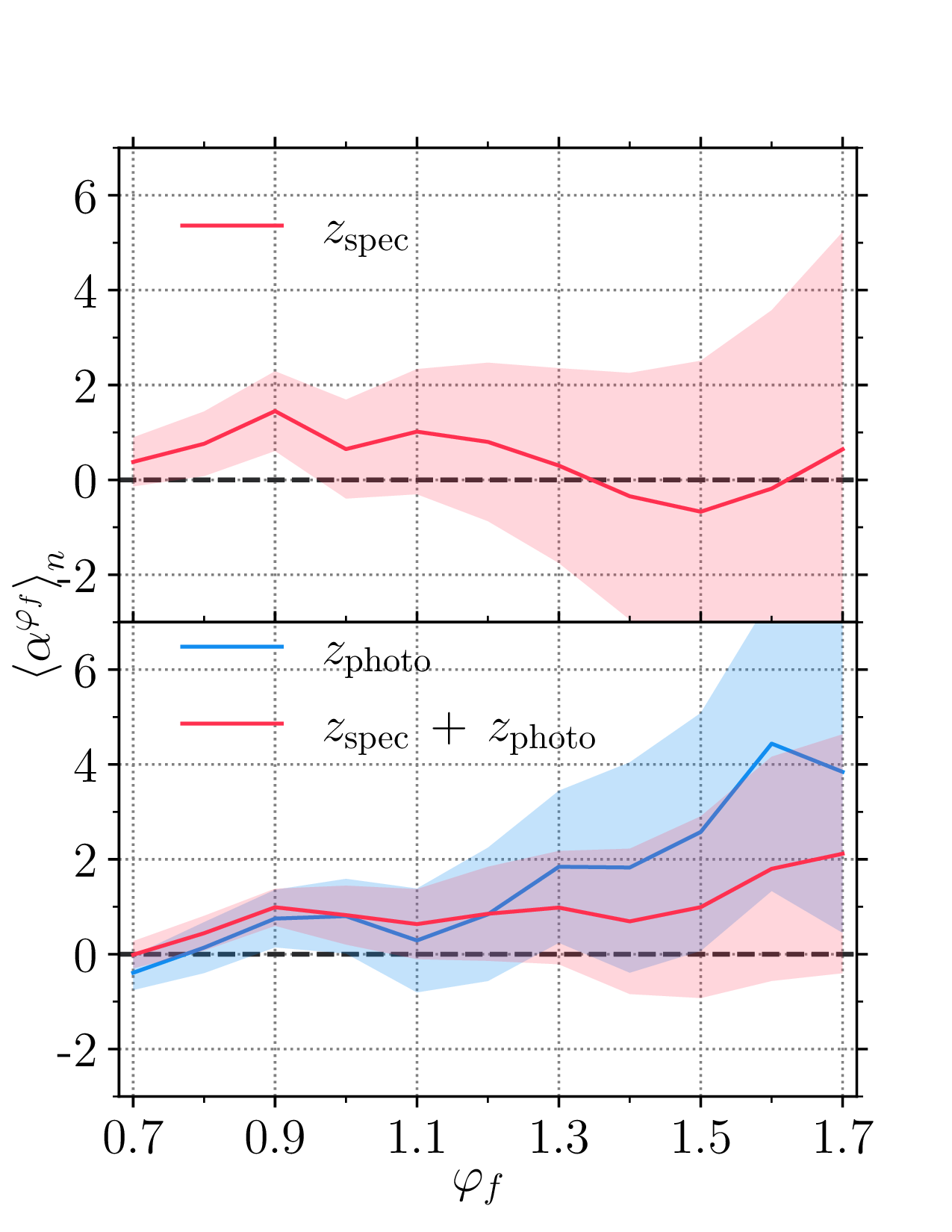
Open-access article published on Journal of Cosmology and Astroparticle Physics, December 2020. See also the same MPA research highlight article highlighted above.
Measuring and modeling galaxy shapes at the field level
The tidal field of large-scale structure tends to align with large-scale filaments. This has indeed been observed in both gravity-only and hydrodynamics cosmological simulations, e.g. the HORIZON-AGN shown in the figure below, taken from Codis et al. 2015.
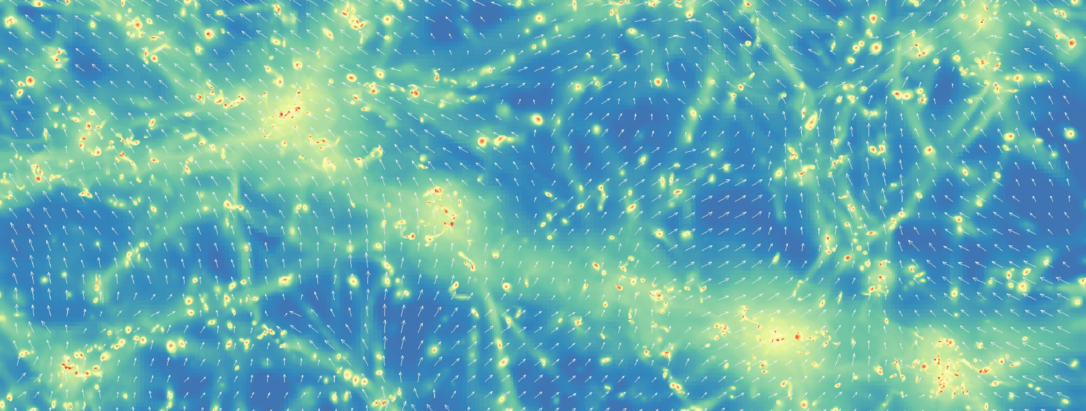
As galaxies form along these filaments, they are streched or squeezed by the tidal force, hence the intrinsic alignment between galaxy ellipticity (shape) with the tidal field (host filament). We are the first to measure the amplitude of this intrinsic alignment at the field level, i.e. galaxy by galaxy, in observational data. Specifically, using an inferred tidal field of Cold Dark Matter (which cannot be observed directly), and the measured shapes of luminous red galaxies within the same volume, we detect an alignment signal at more than 4-sigma level. Our findings align with the galaxy intrinsic alignment picture described above: at linear order, there exists a clear correlation between the LSS tidal field and the galaxy shape, whose amplitude is constant on very large scales, up to 80-100 Mpc/h.
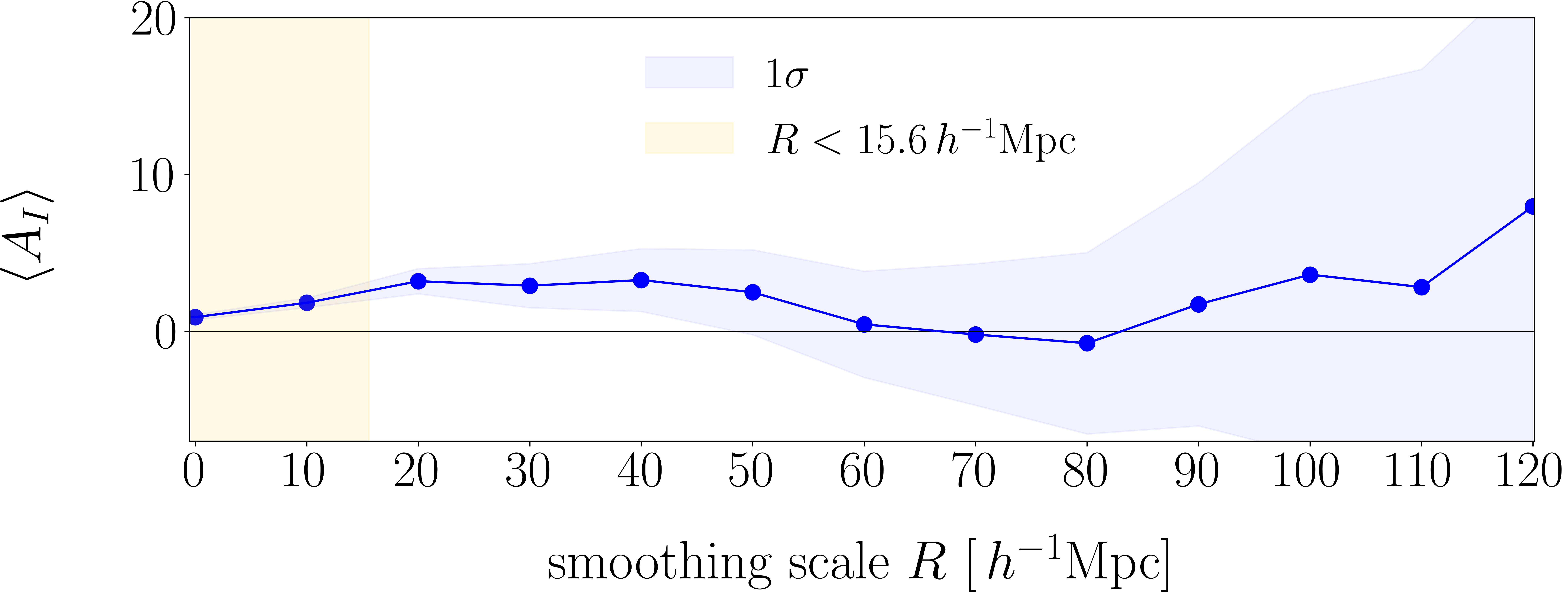
This work was done in collaboration with Eleni Tsaprazi and the Aquila consortium.
Open-access article, published on Journal of Cosmology and Astroparticle Physics, August 2022. See also this press release featured on MPA research highlights, April 2022.